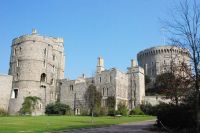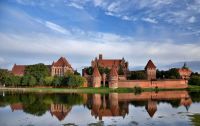11 facts about Alcázar of Seville
The Alcázar of Seville is the oldest royal palace in Europe, continuously occupied by the rulers of Spain. The royal family does not live here permane ...
11 facts about Brooklyn Bridge
It is one of the oldest suspension bridges in the world. It connects Brooklyn with Manhattan, runs over the East River, and was completed in 1883. ...
17 facts about Krak des Chevaliers
Krak des Chevaliers, the magnificent fortress of the Knights of St. John, is one of the largest, most famous, and until recently best-preserved stone ...
























